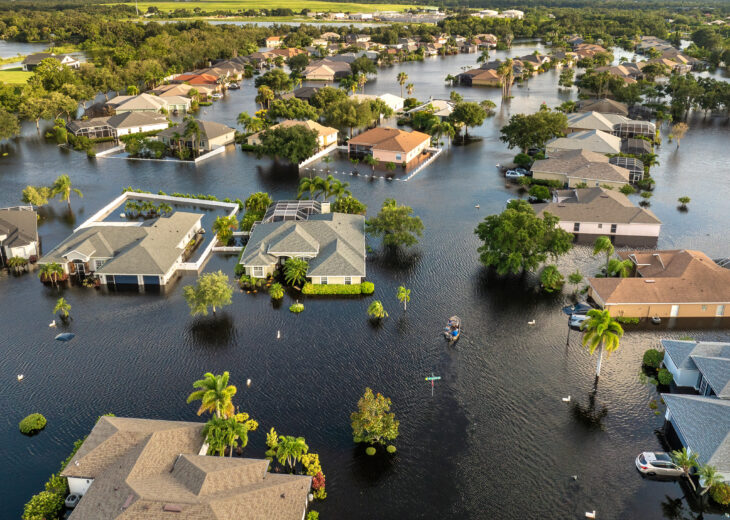Florida Flood Zones and Evacuation Zones Explained

If you live in Florida, you’ve probably heard the terms flood zones and evacuation zones, especially during hurricane season. While they may sound similar, they serve distinct purposes and impact your safety and finances in different ways. Understanding the difference is critical, especially when deciding whether to purchase flood insurance.
A flood zone is a geographic area defined by the Federal Emergency Management Agency (FEMA) that indicates the level of flood risk for that location. Flood zones are used primarily for insurance rating and building regulations.
Flood maps are based on historical data and topography, but experts warn that many are outdated. In fact, flooding caused by Hurricanes Ian and Nicole prompted a reevaluation of many areas in Florida, although updated FEMA flood maps can take years to finalize. You can look up your property’s flood zone using FEMA’s Flood Map Service Center.
Key point: Flood zones are used by the National Flood Insurance Program (NFIP) to determine flood insurance requirements and premiums.
An evacuation zone is designated by your county’s emergency management office and reflects the risk of storm surge from hurricanes, not rainfall flooding. These zones help local governments determine which areas should evacuate and in what order before a storm makes landfall.
For example, you might live outside a FEMA flood zone but inside a high-risk evacuation zone if your property is vulnerable to storm surge.
To find your evacuation zone, visit FloridaDisaster.org/Know and enter your address.
It’s a common misconception that being outside of a flood zone means you’re safe from flooding. The reality is more complex:
And yes, floods can—and do—occur well outside designated flood zones.
Yes, FEMA’s flood zones are still largely based on what’s known as a 100-year flood, or a 1% annual chance of flooding. However, climate change is making these calculations outdated. What used to be called a “100-year flood” can now happen even every 20 years or more frequently due to shifting climate patterns, according to NOAA and CISA. Many flood maps in Florida are decades old, failing to reflect today’s climate realities, including increased rainfall and rising sea levels, as reported by Central Florida Public Media.
FEMA reports that over 20% of flood insurance claims come from homes located outside high-risk flood zones. That’s why flood insurance isn’t just for coastal or high-risk areas.
“You need flood insurance if you live in Florida,” says Greg Moraski, Chief Claims Officer at Security First Insurance. “Flooding doesn’t only happen during hurricanes. It can come from a stalled system, poor drainage, or just unusually heavy rain.”
Flood damage is not covered under standard homeowners insurance policies. You must purchase a separate flood insurance policy—either through the National Flood Insurance Program (NFIP) or a private insurer.
Flood insurance—typically offered through the NFIP or a private flood insurer—can help pay to repair or replace:
Even if you’re not in a high-risk zone, having flood insurance can protect you from financial devastation.
If you’re not required to carry flood insurance by your mortgage lender, the decision is still worth serious consideration. It can cost less than $1 per day for many Florida homeowners in lower-risk zones. And the peace of mind? Priceless.
Take Action
Flooding doesn’t necessarily follow maps or rules; it follows rain, topography, and unpredictable weather patterns. And when it comes to your safety, knowing your evacuation zone is just as critical as understanding your flood zone.
Whether you’re preparing for a storm or planning your finances, having a clear picture of your risk empowers you to make smart, proactive decisions.
At the end of the day, preparation begins with understanding your risks and zones, so you know when and where to go.
 Florida Lifestyle
Florida Lifestyle
Explore 7 Florida homeowners insurance products tailored to your needs—from condos to rentals to high-value homes. Get a quote today.
 Home Improvement
Home Improvement
Discover how Security First Insurance’s First Choice Repair Network® helps Florida homeowners with trusted contractors for repairs, renovations, and faster claims.
 Homeowners Insurance Florida
Homeowners Insurance Florida
Learn how to choose your homeowners insurance deductible. Compare flat vs. percentage options, see real examples, and decide what’s best.